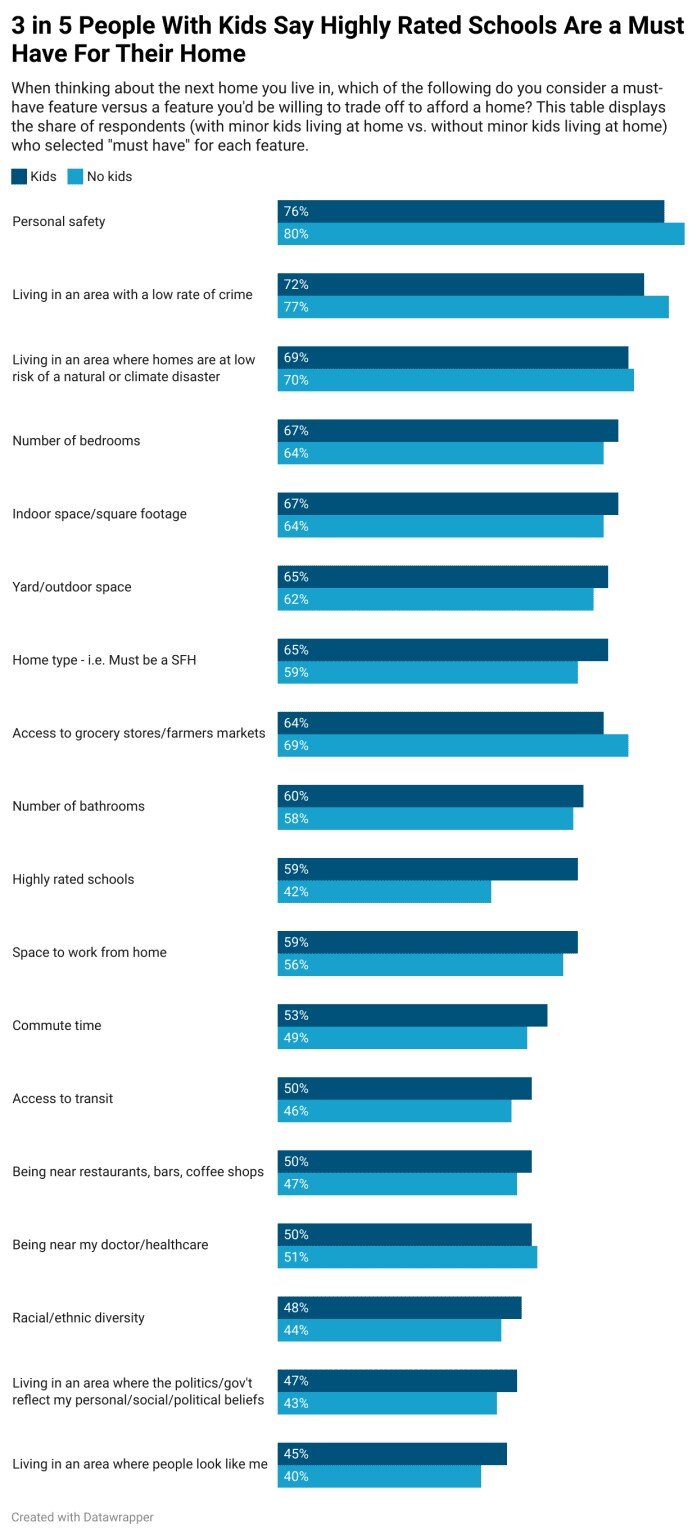Nearly one in five U.S. homebuyers would sacrifice personal safety to purchase a home they can afford, underscoring the severity of the nation’s affordability crisis, according to a new Redfin survey.
The report found that while 22% of respondents said they’re willing to compromise on safety, the majority still rank it as a top priority. Seventy-eight percent of buyers listed personal safety as a “must-have,” followed by a low crime rate (74%) and reduced exposure to natural disasters (68%). Two-thirds said access to grocery stores was also non-negotiable.
The findings highlight the tension buyers face as prices and borrowing costs remain elevated. The median U.S. home price has surged more than 40% since before the pandemic, while mortgage rates have roughly doubled from their lows. Redfin estimates buyers now need to earn about $112,000 annually to afford a median-priced home–roughly $25,000 more than the typical U.S. household income.
“Prices are starting to come down, but buyers–especially first-timers–are still battling with affordability,” said Katie Shook, a Redfin Premier agent in Phoenix. “People are prioritizing practical needs like enough bedrooms, workspace or an easy commute. The extras–a pool, a renovated kitchen–are no longer worth paying a premium for.”
While affordability pressures dominate, the market backdrop is shifting in buyers’ favor in several metros. Properties are taking longer to sell, giving buyers more room to negotiate. Sellers are increasingly offering concessions such as mortgage-rate buydowns or covering closing costs. “Today, the definition of a win is selling,” Shook said. “For buyers, that means there’s room to negotiate on the must-haves and even some nice-to-haves.”
For Families, Space Beats School Ratings
With the school year approaching, Redfin also examined priorities among households with children. Roughly 59% of parents said access to highly rated schools was non-negotiable, while 41% said they would compromise on education quality to secure an affordable home.
Even so, school ratings ranked below more tangible factors. Parents were more likely to identify the number of bedrooms, indoor living space, and outdoor areas as essential. Commute times, proximity to restaurants, and some neighborhood amenities ranked lower on the list.
The survey underscores how affordability constraints are reshaping the U.S. housing market, forcing buyers to balance fundamental safety and space requirements against financial realities in one of the most expensive eras for American homeownership.

Real Estate Listings Showcase
#Americans #Trade #Personal #Safety #Home #Affordability